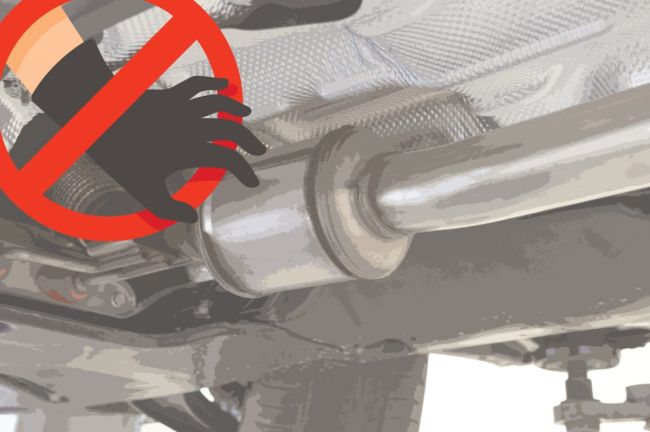
Think Like a Thief to Stop Catalytic Converter Theft
Two factors have contributed to the surge in catalytic converter thefts: the value of the materials in catalytic converters and the increased opportunity for thefts to occur.
The costs of three precious metals – platinum, palladium and rhodium – found inside catalytic converters have skyrocketed. According to the National Insurance Crime Bureau (NICB), on January 4, 2019, rhodium was valued at $2,300 per ounce. On April 25, 2022, that value had risen to $16,500 per ounce.
“Even before the pandemic, we were seeing an increase in thefts,” said Robert Passmore, department vice president of personal lines at the American Property Casualty Insurance Association.
And according to Mike Joner, supervisor of fleet management services for Holman Inc., “Since the onset of the pandemic in 2020, an increased number of fleet vehicles sat idle or were left unattended for extended periods as business volume waned. These idle, unattended units offered an easy target for catalytic converter thieves.”
David Glawe, president and CEO of the NICB, added, “As the value of the precious metals contained in the catalytic converters continues to increase, so do the number of thefts of these devices.” Given that the prices of these precious metals seem to be on the rise and the fact that some palladium comes from Russia, potentially limiting supplies, it is likely that thefts will continue.
Costly Repairs
It takes thieves only a few minutes and some basic tools to remove a catalytic converter, and they can quickly hit multiple vehicles in one parking lot without being detected.
Once a theft occurs, the fleet has no choice but to get the vehicle repaired. Repairs are costly, ranging from $1,000 to $3,000 to get a vehicle fixed, plus expenses due to downtime at work, according to the NICB. Costs vary based on the type of catalytic converter, and some vehicles – especially those with high ground clearance – are more likely to be targeted because they provide easier access to the catalytic converter.
Following a theft, the vehicle must be taken out of service if for no other reason than it will be extremely loud without the converter. Not only that, but it is illegal to operate the vehicle with an open exhaust system. There could also be expenses beyond the cost of the catalytic converter itself. “You may have to repair or replace items such as brake lines, wiring harnesses, fuel lines, et cetera as well,” Joner explained.
Protecting Your Assets
The good news is that there are steps utility fleets can take to lessen the chance they will be victims of catalytic converter theft.
“If you are trying to protect your vehicles, you have to think like a thief,” Passmore suggested.
So, evaluate where you are parking your vehicles at night. Is the lot secure? Is it well-lit? Is it tough to get into? Does it have a fence around it? Are there cameras monitoring it?
In addition to securing the parking area, there are some devices available that make it more difficult for a thief to get to the catalytic converter, but those devices are not available for all vehicles. There are three common types of devices: a steel shield that goes over the converter, rebar cages, and stainless-steel cables that are welded from the converter to the vehicle’s frame. The purpose of these devices is to increase the time it takes for the thief to remove the catalytic converter. Theft protection devices include the CatStrap (www.catstrap.net) and the CatClamp (https://catclamp.com). If none of these products is suitable, the fleet can take its vehicles to a muffler shop and have rebar cages installed.
It is likely that catalytic converter theft will continue to be a problem, so fleet managers must do everything they can to make their assets less attractive to thieves.
About the Author: Denise L. Rondini is president of Rondini Communications, a company specializing in researching and writing for a variety of industries, including trucking, industrial pumps, manufacturing, technology and supply chain. Her clients include suppliers, leasing companies, publications, dealers, distributors and nonprofits.

